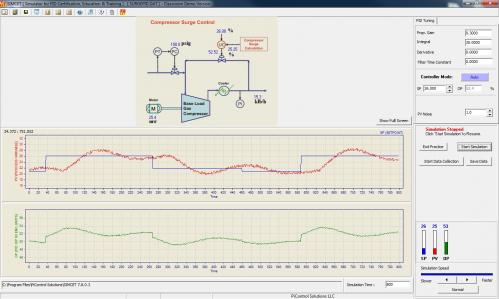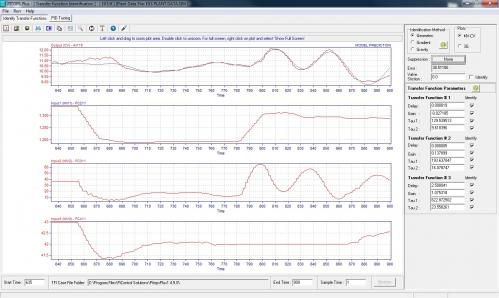Diagnostic and optimization software
Large number of process variables must be maintained within defined limits in order to have plants operating in a satisfying way. If any of the key variables assume a value beyond defined limits it can seriously affect on process safety, environment, production costs, and product quality.
Variable deviation from defined limits can be caused by different reasons: equipment problems, malfunctions of instruments, badly tuned controller parameters and unusual disturbances.
Our service includes routine process monitoring, preventive monitoring, fault detection and diagnosis. Based on the calculated statistical criteria it is possible to identify problems of each control loop and improve the quality of the product.
SIMCET – Real-time PID tuning simulator for training and certification
SIMCET is a real-time simulator for controller tuning practice and testing of tuning skills. It is practical for industrial applications and education. Simcet allows practicing tuning on variety of PID control loops identical to the real DCS at the plant. The uniqueness of Simcet is that it provides features to test and grade tuning skills of engineers and technicians. Inside the software user can change the PID tuning and process dynamics parameters and simulate the appearance of disturbances in the process.
SIMCET brochure (EN): SIMCET brochure (HR); SIMCET brochure (DE)
PITOPS – Multivariable system identification and PID/APC tuning software
PITOPS is a comprehensive system identification and primary / advanced process control (APC) simulator and optimiser. It analyses process data without the need for any prior data pre-conditioning. The software enables multivariable system analysis with presence of interactions and analysis of complex, non-linear and sluggish processes typical for chemical and other industries.
An overview list of Pitops features:
- Process model identification using closed-loop and/or open-loop data
- Simultaneous, multivariable identification with multi-inputs
- Identifies control valve stiction and allows design of control valve characterizer
- Runs all in time domain
- Allows single/cascade/feedforward control loop simulation, tuning and optimization
- Designs override constraint control schemes
- Allows internal model control (IMC) and dead time compensation simulation
PITOPS brochure (EN); PITOPS brochure (HR); PITOPS brochure (DE)
APROMON – On-line PID control performance monitoring software
APROMON is an on-line software product for monitoring control performance of primary and advanced control loops. Apromon evaluates single loops, cascade loops and even signals that have PV only but no controller associated them. Apromon has the unique and powerful TAD (True Amplitude Detection) algorithm for instability detection and actual control loop oscillation determination.
Distinguishing and powerful features of Apromon:
- Automatically runs in pre-set period, calculating and archiving control loop performance
- Calculates over 25 performance criteria for every tag
- Equipped with a powerful on-line oscillation detection feature
- Stores all performance criteria in a history data archiving system
- Can be run for any number of loops with multiple instances, if necessary on existing PCs
- Every time it runs, automatically generates detailed and summary report
APROMON brochure (EN), APROMON brochure (HR); APROMON brochure (DE)
More info: PiControl Solutions (www.picontrolsolutions.com)
Application
Connectivity
Our technology and software products can work with any DCS or PLC. Software can be easily connected through OPC communication protocol to all common process control systems.
Our process control tuning software and advanced process control concepts can be applied to distillation control, reactor control, furnace control, boiler control, turbine control, compressor control, heat exchanger control, combustion control, dew point/bubble point control, pipeline control, environmental emissions control, motor control, turbo-machinery control and others.





